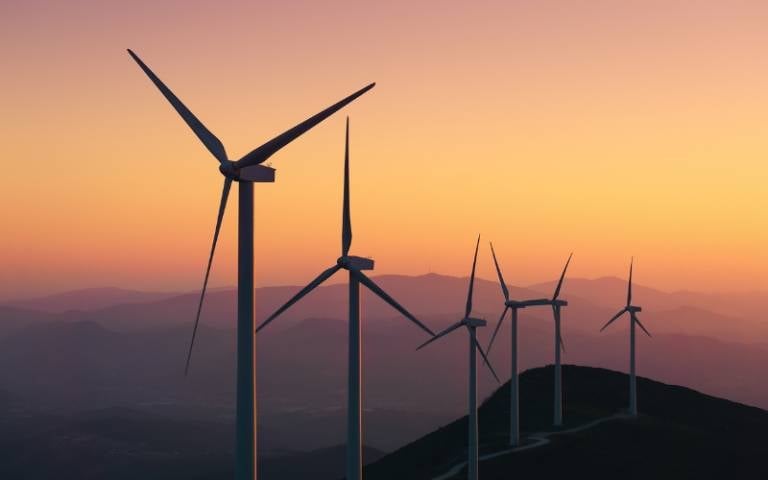December 17, 2025 | 13:31 GMT +7
December 17, 2025 | 13:31 GMT +7
Hotline: 0913.378.918
December 17, 2025 | 13:31 GMT +7
Hotline: 0913.378.918
The Ministry of Finance (MOF) is gathering opinions on a draft Decree for the domestic carbon trading floor, aiming to establish a legal foundation for transactions in Vietnam's carbon market. According to the draft, the domestic carbon trading floor is designed to facilitate the trading of greenhouse gas emission allowances and carbon credits. These two types of commodities correspond to current legal provisions on emission reduction, including mandatory reductions for major emitters and incentives for voluntary reductions by other organizations and businesses.
Mr. Tran Minh Giang, Deputy Head of the Legal Division for Financial Markets under the MOF's Legal Department, noted that although carbon credits are not classified as financial or securities products, the Ministry intends to link the operation of the carbon trading floor with units experienced in running the stock market in Vietnam.
According to the draft, the Hanoi Stock Exchange (HNX) will serve as the trading service provider. The Vietnam Securities Depository and Clearing Corporation (VSDC) will be responsible for depository and transaction settlement services. Additionally, a system of trading members, depository members, and settlement banks will act as intermediaries to enhance IT security and mitigate trading risks.

Vietnam aims to establish a legal framework from the outset, before the carbon market becomes operational.
Although the intermediary-supported model is not common globally, the MOF has proposed its adoption in Vietnam due to its high level of security and safety for participating parties. This approach not only ensures data confidentiality but also helps mitigate risks that may arise when liquidity increases sharply in the future.
The pilot phase of the domestic carbon market is expected to be implemented from 2025 to 2028. The MOF's representative affirmed that the trading infrastructure will be ready as soon as businesses are allocated greenhouse gas emission allowances. Due to the market's current small scale, low liquidity, and lack of standardized commodities, the trading method will be electronically negotiated transactions. Notably, all transactions will require pre-trade margin deposits, and payments will be settled immediately after each transaction to minimize debt risk between parties.
According to Mr. Tran Minh Giang, as the market develops, more flexible trading methods, such as order matching, in line with the Vietnam Stock Exchange (VNX) mechanisms, will be adopted. During the initial phase, trading will mainly involve spot trades, while derivative products will be considered once the market reaches a sufficient scale.
During this phase, service providers (HNX, VSDC, VNX) will not charge exchange fees in an effort to encourage businesses’ participation. At the same time, the MOF will research and perfect regulations on pricing, taxes, fees, charges, and service prices related to the purchase and exchange of greenhouse gas emission allowances and carbon credits. The Ministry will also coordinate with the Ministry of Agriculture and Environment to consider introducing new products, such as derivative products in line with international practices, and modern trading mechanisms to enhance liquidity.
According to Prof. Michael Mehling, Deputy Director of the Center for Energy and Environmental Policy Research at the Massachusetts Institute of Technology (MIT), emission allowances are intangible assets that can be transferred immediately and hold no value beyond compliance purposes. This nature makes them a vulnerable target for market manipulation. Vietnam must establish a legal framework from the outset, before the market becomes operational, to create a solid state-led monitoring mechanism, which would help reduce risks for businesses and narrow the bid-ask price spread. Such an approach would help the country avoid the "crisis-response mode" that many other nations have experienced.
The European Union Emissions Trading System (EU ETS), the world's largest carbon market, once faced a major value-added tax (VAT) fraud scandal in the 2008-2010 period, causing an estimated 5 billion euros in losses. Several cyberattacks and allowance thefts also occurred due to the lack of protective layers in the immediate transfer mechanism. Furthermore, at the time, the EU ETS allowed unlimited use of Kyoto credits, which led to an oversupply, driving carbon prices down and eliminating trading incentives. It took the EU many years and a series of financial monitoring reforms to restore market participants’ trust and push carbon prices back up, eventually turning the EU ETS into a global benchmark.

Emission allowances and carbon credits are intangible assets that require a tight management policy.
In the case of a smaller market like the UK Emissions Trading Scheme (UK ETS), which has been operational since 2021, efforts have been focused on concentrated risk control and price stabilization. The management agency imposes a 25% cap on total accumulated commodity holdings (including both spot and derivative contracts) to prevent large investors from “hoarding.” When prices exceed certain thresholds, the government can release additional allowances within 25 days to stabilize prices. Data analytics agencies continuously monitor market movements to detect suspicious transactions.
Sharing insights from China, Prof. Zhang Xiliang, Director of the Institute of Energy, Environment and Economy at Tsinghua University and Chairman of the China Carbon Emissions Trading Association (CETA), stated that the pilot phase represents a cautious but necessary step, allowing for the testing of various allocation and monitoring methods and assessing the feasibility of a carbon market mechanism under real-world conditions.
China piloted its emissions trading mechanism in seven major provinces and cities in 2013 and officially launched its national carbon market in July 2021. The system quickly became the world’s largest carbon market, managing around 4.5 billion tons of CO2, with further expansion expected. At the core of this success is a multi-layered legal framework spanning from central to local levels, along with a rigorous enforcement mechanism that clearly delineates the responsibilities of all stakeholders.
According to experts, a carbon market only becomes meaningful when it operates transparently, with discipline, and is closely associated with sustainable development goals. In the pilot phase, it is essential to build an accurate MRV (monitoring–reporting–verification) system, provide workforce training, and raise business awareness regarding emission reduction responsibilities.
The establishment of a carbon trading floor is not only a tool for managing emissions but also creates new business opportunities for enterprises. Emitting units can proactively adjust their production activities and invest in technologies to reduce emissions, then sell surplus allowances or emission reduction credits on the market to generate additional revenue.
Drawing from international experience, experts proposed that it is necessary to clearly delineate the responsibilities between the Ministry of Agriculture and Environment and the Ministry of Finance in terms of monitoring and data sharing. Besides, a central clearing house should be established to mitigate credit risk. There should be a cap on the total volume of allowances a business can hold, including those held by affiliated companies, with flexibility to adjust based on market movements. Moreover, publishing transaction data and auction information publicly will enhance transparency and strengthen investors’ trust.
In the long term, the carbon trading floor will also help shape carbon pricing within the economy, providing a foundation for policy development and attracting investment in clean energy and green technologies.
Translated by Thu Huyen

(VAN) Trading forest carbon credits is to reduce greenhouse gas emissions while creating sustainable livelihoods for local communities.

(VAN) Expanding the area of forests with FSC certification creates a foundation for elevating the economic value of forests, promoting sustainable management, and offering opportunities to participate in the carbon credit market.

(VAN) MAE and GIZ organized the conference to strengthening capacity and readiness for EUDR implementation in Vietnam.

(VAN) When women, men, children, and people with disabilities all have the opportunity to maximize their potential, the economy will grow, and the country will prosper.

(VAN) Effective disaster prevention and the creation of sustainable livelihoods through practical forestry policies are the distinct and crucial values of special-use and protection forests.

(VAN) The policy movement regarding carbon emission reduction is opening up a new approach, linking national goals with practical agricultural production.

(VAN) Deputy Prime Minister Tran Hong Ha made this request at the 24th meeting of the National Steering Committee for Combating IUU Fishing with 21 coastal provinces and cities joining virtually.